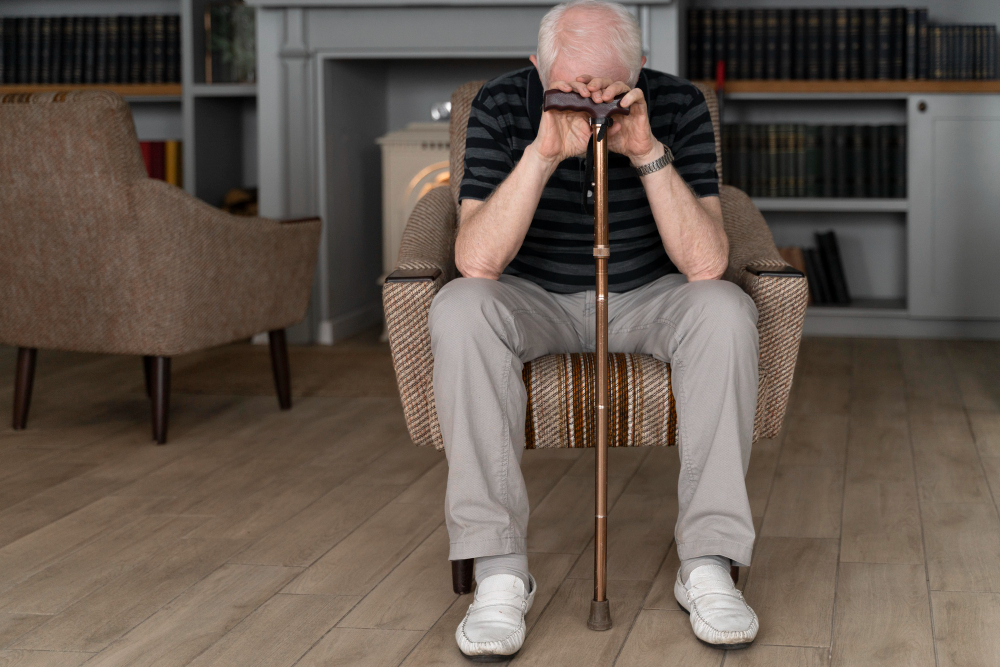How Physical Therapy Can Help Manage the Symptoms of Parkinson's Disease
Parkinson's disease is a progressive neurological disorder that affects movement, balance, and coordination. It is caused by the loss of nerve cells in the brain that produce dopamine, a chemical messenger responsible for controlling our movements. Symptoms of Parkinson's disease can range from mild to severe and may include tremors, stiffness, slowness of movement, difficulty with balance or coordination, and changes in speech or handwriting. As the disease progresses, additional Parkinson's disease symptoms can develop such as depression, anxiety and cognitive decline. Early detection and treatment can help manage symptoms and slow down the progression of the disease.
Introduction
Parkinson's disease is a progressive neurological disorder that affects the central nervous system. It is characterized by tremors, stiffness, and difficulty with movement. It can also cause cognitive impairment and dementia in some cases. The cause of Parkinson's disease is unknown, but it is believed to be linked to genetic factors as well as environmental exposures. Treatment options include medications, physical therapy, and lifestyle changes. With proper management and care, people with Parkinson's can still lead full lives despite the Parkinson's disease symptoms they experience.
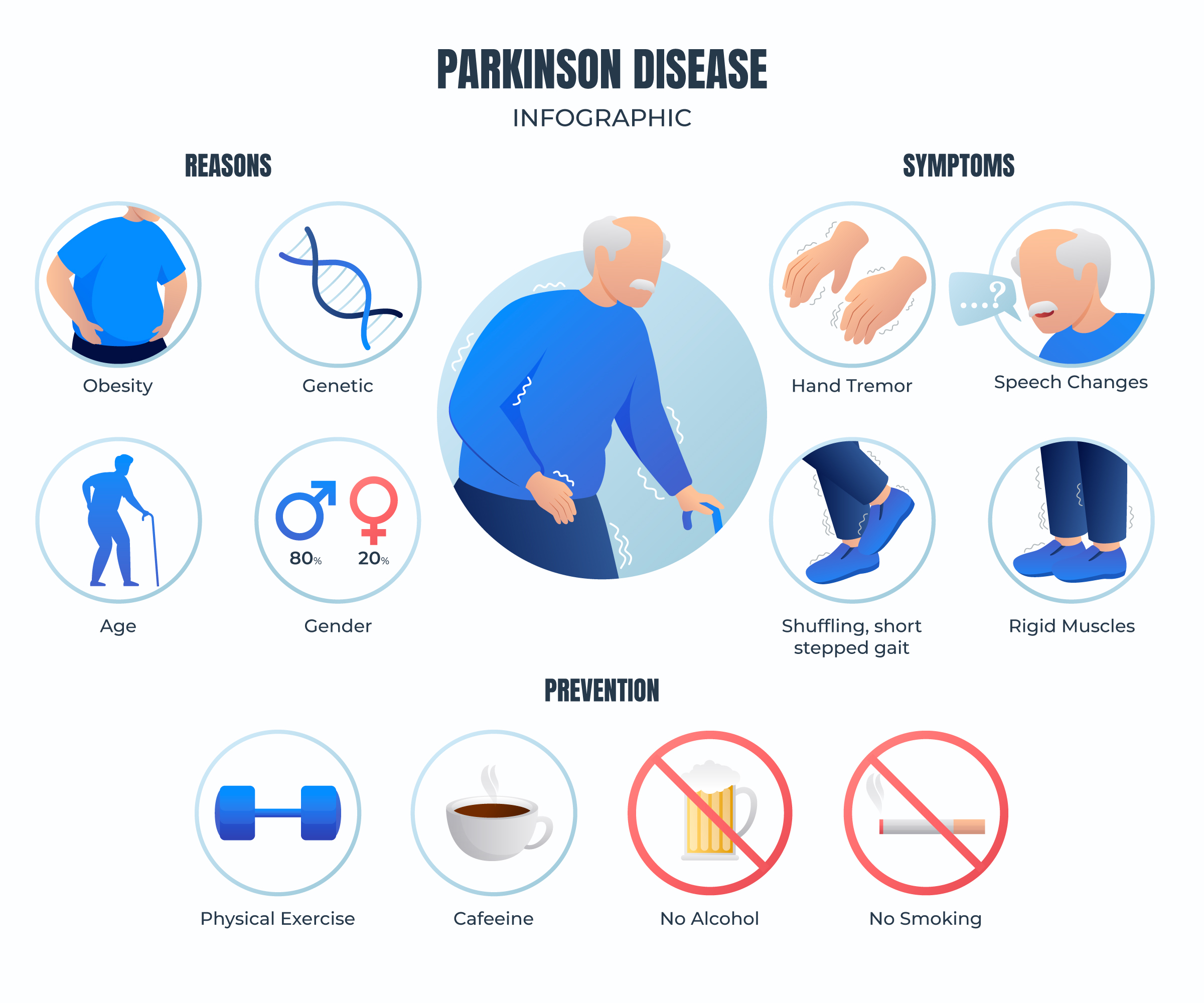
Causes
Parkinson's disease is a progressive neurological disorder that affects the central nervous system. It is characterized by tremors, stiffness, and difficulty with movement. It can also cause cognitive impairment and dementia in some cases. The cause of Parkinson's disease is unknown, but it is believed to be linked to genetic factors as well as environmental exposures. Treatment options include medications, physical therapy, and lifestyle changes. With proper management and care, people with Parkinson's can still lead full lives despite the symptoms they experience.
Characteristics & Symptoms—
Parkinson's disease is a progressive neurological disorder that affects the central nervous system. It is characterized by tremors, slow movement, rigid muscles, and impaired balance and coordination. While there is no cure for Parkinson’s disease, it can be managed with medication and lifestyle changes. The most common Parkinson's disease symptoms include tremor, slowness of movement (bradykinesia), stiffness or rigidity of the limbs and trunk, impaired balance and coordination (postural instability), depression, anxiety, sleep disturbances and cognitive decline. Other symptoms can include difficulty swallowing or speaking, fatigue and constipation. Early diagnosis and treatment are essential to managing the symptoms of Parkinson’s disease.
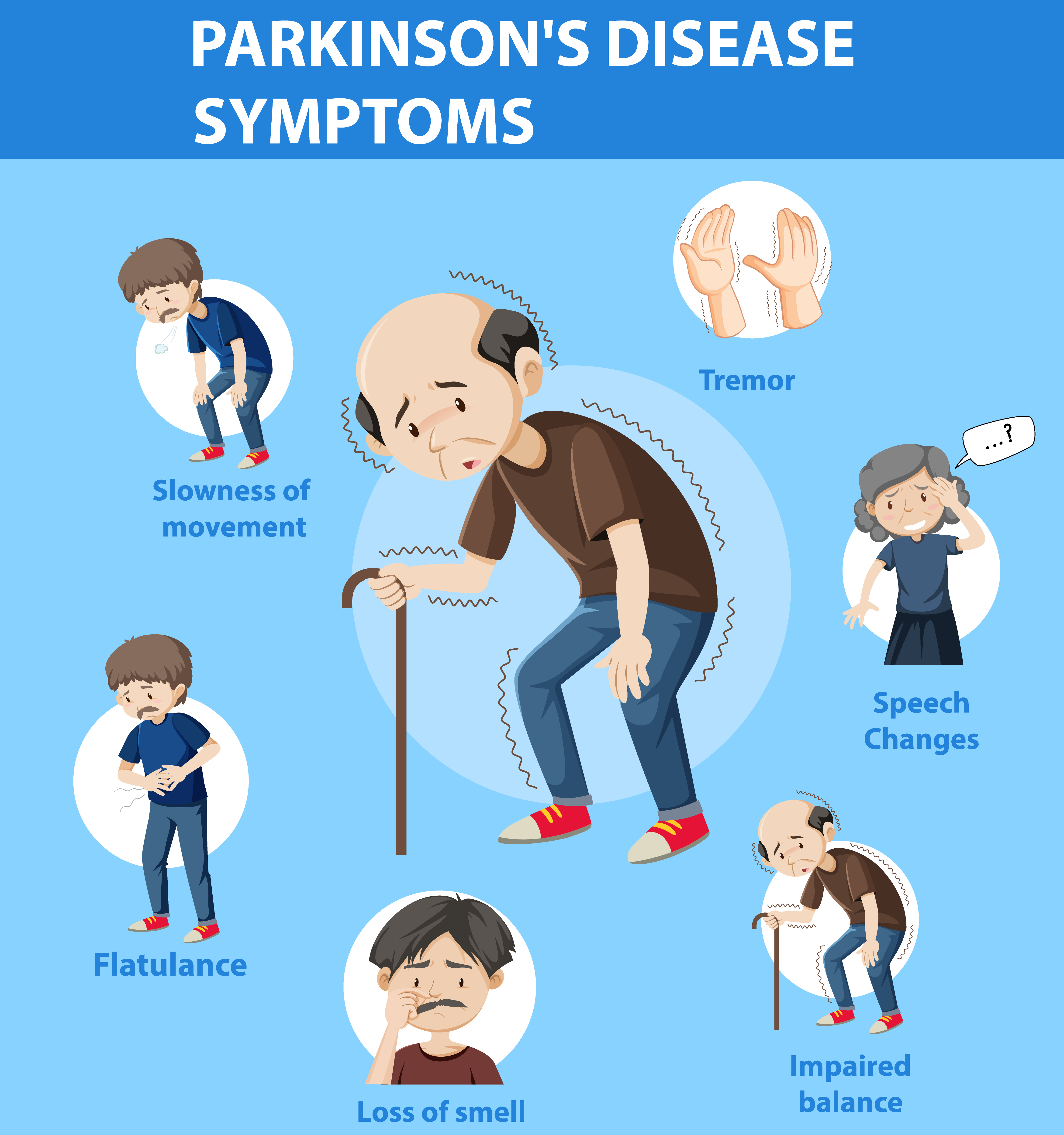
Parkinson's disease with dementia.
Parkinson's disease is a progressive neurological disorder that affects a person's motor and non-motor functions. For some people, the disease can progress to dementia, which is an umbrella term for a decline in cognitive abilities. Dementia associated with Parkinson's can cause memory loss, confusion, difficulty communicating and understanding language, and problems with problem-solving and decision-making. It can also lead to behavioral changes such as aggression or agitation.
Parkinson's with dementia is a complex condition that requires specialized care from doctors and other healthcare professionals. Treatment options include medications to manage symptoms such as tremor or slowness of movement, as well as therapies to address cognitive deficits associated with the condition. It is important for patients and their caregivers to understand the nature of this condition so they can get the best possible care.
Stages of PD—
Parkinson's disease (PD) is a progressive neurological disorder that affects movement, balance, and coordination. It is characterized by five stages, each with its own set of symptoms and treatment options. In this article, we will discuss the four stages of PD in detail and how they affect a person's daily life. We will also look at some common treatments for each stage. By understanding the progression of PD, patients can better plan for their future care needs.
stages of Parkinson's disease.
1.Stage 1 of Parkinson’s Disease- Mildest Form of Disease
2.Stage 2 of Parkinson’s Disease- Moderate Form of the Disease
3.Stage 3 of Parkinson’s Disease- Middle Stage of the Problem
4.Stage 4 of Parkinson’s Disease- Physical Movements Require Assistive Devices
5.Stage 5 of Parkinson’s Disease- Advanced Stage of the Problem
How does Parkinson's disease progress?
Parkinson's disease is a progressive neurological disorder that affects the way a person moves, talks, and thinks. It is caused by the degeneration of dopamine-producing nerve cells in the brain. As these cells die off, people with Parkinson's experience symptoms such as tremors, stiffness, and difficulty walking and speaking. The progression of Parkinson's can vary from person to person, but it typically progresses slowly over time. As the disease progresses, more symptoms may develop and existing ones may worsen. Treatment options are available to help manage symptoms and slow down the progression of Parkinson's disease.
Is Parkinson's disease fatal?
Parkinson's disease is a progressive neurological disorder that affects movement, speech, and other motor functions. While it is not typically considered fatal, it can lead to complications that can cause death.
Physiotherapy —
Physical therapy is an important part of managing the symptoms of Parkinson's disease. It can help to improve mobility, balance, coordination, and strength. Physical therapy also helps to reduce the risk of falls and injuries associated with the condition. By using a combination of exercises, stretches, and manual techniques, physical therapists can help people with Parkinson's disease maintain their independence and quality of life. Physiotherapy is a key component of managing Parkinson's disease. It helps to improve balance, coordination, flexibility, and strength - all of which are essential for maintaining mobility and independence.
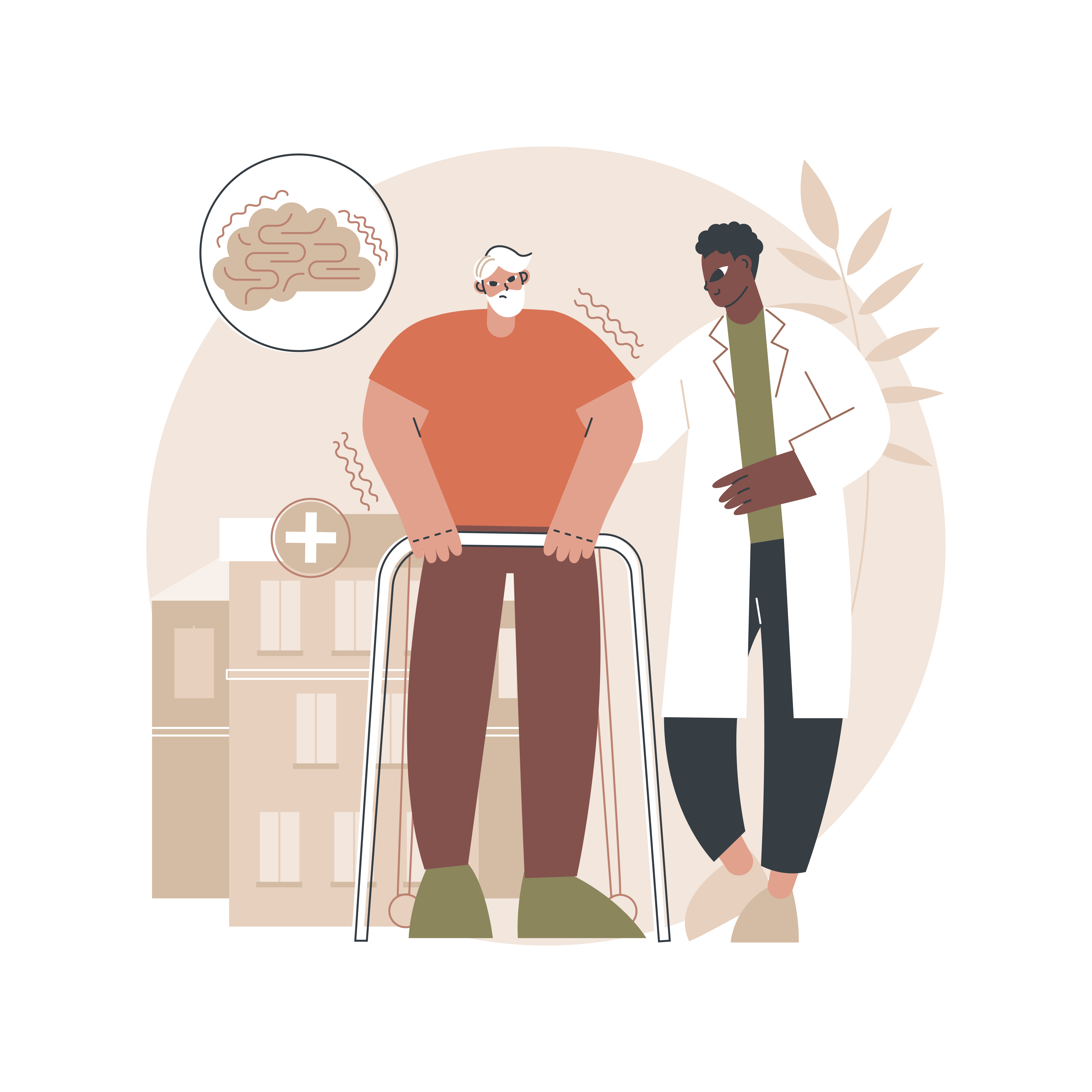
There are several types of physiotherapy that can be used to treat the symptoms associated with Parkinson's disease. These include exercises to improve posture and balance, stretching exercises to reduce stiffness, strengthening exercises to increase muscle strength and endurance, and activities designed specifically for people with Parkinson's disease. In addition, there are specialized treatments such as deep brain stimulation (DBS) that can help manage the symptoms of Parkinson's disease.
By understanding the various types of physical therapy available for treating Parkinson’s disease, individuals can make informed decisions about their treatment plan. Physical therapy- balance training Balance training for Parkinson's disease is an effective way to improve balance and reduce the risk of falls. It is an important part of a comprehensive treatment plan for people with Parkinson’s disease. Balance training includes exercises that focus on improving strength, flexibility, coordination, and balance. It can help people with Parkinson’s maintain their independence and improve their quality of life.
Frankel's Exercise
Frankel's exercise is a form of physical therapy designed specifically for people with Parkinson's disease. The exercise was developed by Dr. Stanley Frankel in the 1970s to help those suffering from the disease improve their mobility and balance. It combines stretching, flexibility, strength training and coordination exercises to help improve posture, balance and gait. By using this exercise, patients can reduce their risk of falling due to poor coordination and balance as well as reduce stiffness in their joints caused by the disease. It also helps improve quality of life by enabling them to do activities that they couldn't do before due to their condition. Frankel's exercise is an effective way for Parkinson's patients to manage their symptoms and maintain a healthy lifestyle despite the challenges posed by the disease.
Coordination training
Coordination training for Parkinson's Disease is a form of physical therapy that helps improve motor skills, balance, and coordination in people with the disease. Coordination training involves exercises that are tailored to the individual's needs and abilities, including stretching, strengthening, and coordination exercises. This type of therapy can help reduce symptoms such as stiffness, tremor, slowness of movement, and difficulty with walking or other activities. Additionally, coordination training can help improve quality of life by increasing independence and decreasing risk of falls.
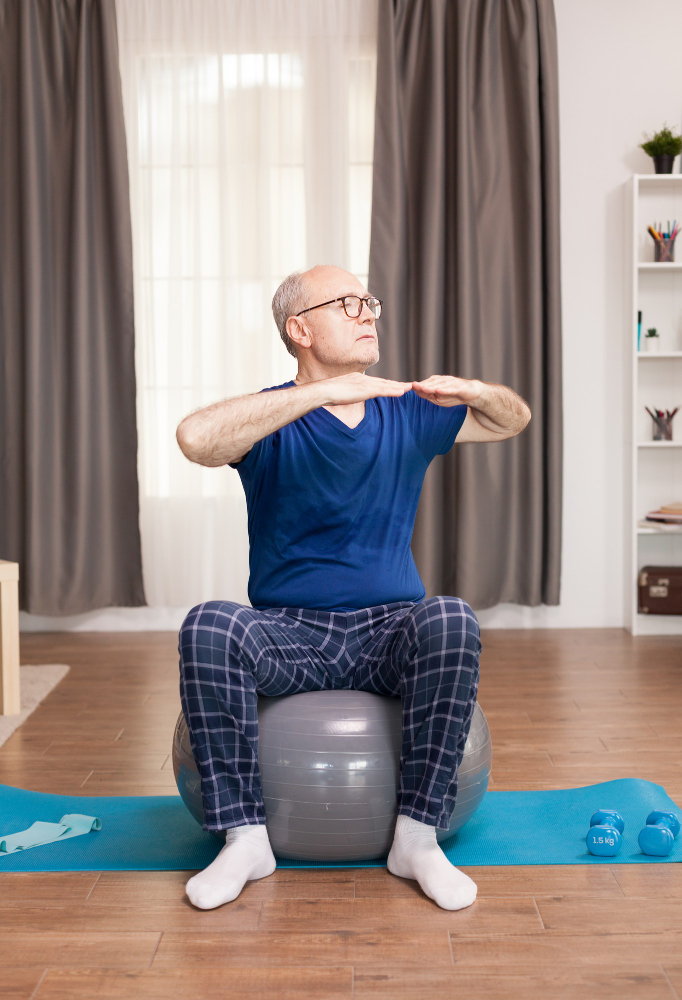
Pro physiotherapy provides home visit services for Parkinson's disease sufferers in Bangalore. This service is designed to help those suffering from the disease to get the most out of their treatment and rehabilitation. The team of experienced physiotherapists can provide personalized care and support at home, which is especially beneficial for those with mobility issues. With this service, patients can receive a comprehensive assessment of their condition as well as personalized exercises, stretches, and therapeutic techniques tailored to their needs. In addition, they will also receive advice on lifestyle and diet changes that can have a positive impact on their condition. Pro physiotherapy’s home visit service is a great way for Parkinson’s sufferers in Bangalore to get the care they need without having to leave the comfort of their homes.
To get best physiotherapy services for Parkinson's disease treatment contact Pro Physiotherapy
To read more similar article follow our blog. Click : Neurodegenerative Diseases – The Incurable Diseases?

